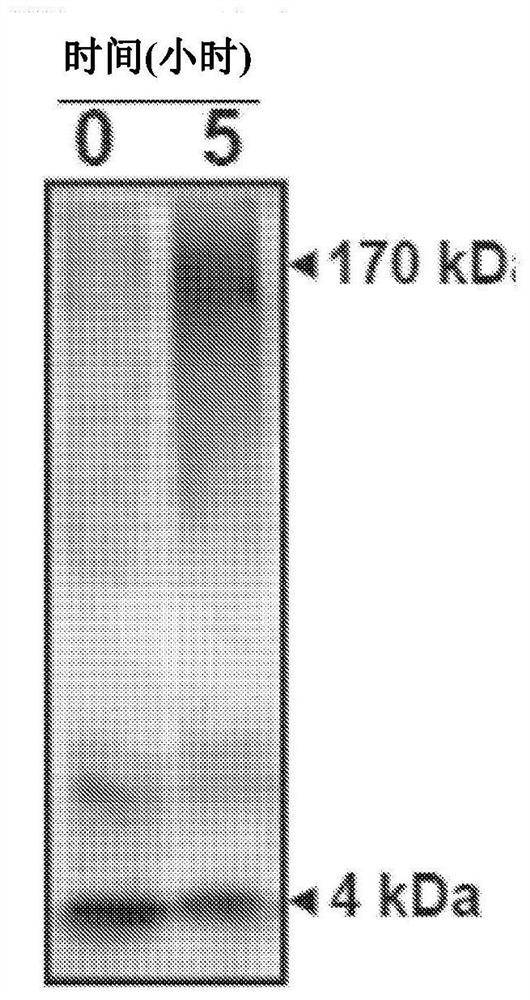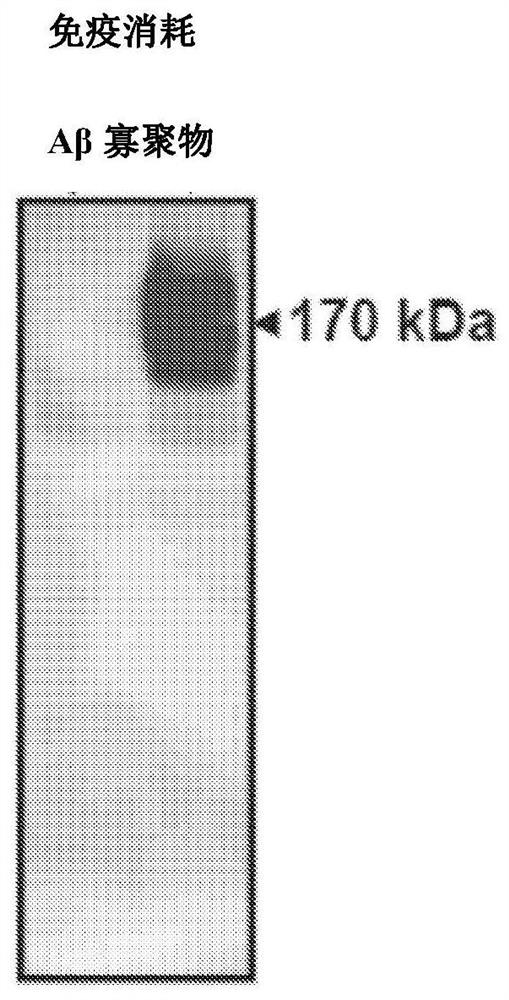Detection of misfolded tau proteins
A misfolded protein technology, applied in the field of detection of misfolded TAU proteins, can solve impractical problems
- Summary
- Abstract
- Description
- Claims
- Application Information
AI Technical Summary
Problems solved by technology
Method used
Image
Examples
Embodiment 1
[0149] Example 1: Preparation of synthetic Aβ oligomers
[0150] Aβ1-42 was synthesized using solid-phase N-tert-butoxycarbonyl chemistry at the W. Keck facility at Yale University and purified by reverse-phase HPLC. The final product was lyophilized and characterized by amino acid analysis and mass spectrometry. To prepare stock solutions of aggregate-free, misfolded A[beta] protein, aggregates were dissolved at high pH and filtered through a 30 kDa cut-off filter to remove residual aggregates. To prepare different types of aggregates, unseeded A[beta]1-42 (10 [mu]M) solutions were incubated at 25[deg.]C, 0.1 M Tris-HCL, pH 7.4 at various times with stirring. The preparations included A[beta] monomers and a mixture of fibrils, protofibrils and soluble misfolded A[beta] protein in varying proportions depending on the incubation time. The extent of aggregation was characterized by ThT fluorescence emission, electron microscopy after negative staining, dot blot studies with A1...
Embodiment 2
[0153] Example 2: Aβ-PMCA detection and synthesis of Aβ oligomers
[0154] Example 2A. Seeding of Aβ aggregates by using or without varying amounts of synthetic soluble misfolded Aβ protein in the presence of Thioflavin T (control (no Aβ oligomers); or 3 of the synthetic soluble misfolded Aβ proteins, 80, 300, and 8400 femtomoles) were incubated with seed-free Aβ1-42 solutions to study. Aβ-PMCA general procedure: A solution of 2 μM aggregate-free Aβ1-42 in 0.1 M Tris-HCL pH7.4 (total volume 200 μL) was placed in an opaque 96-well plate and incubated alone or in the synthesis of Aβ aggregates ( Prepared by incubating for 5 h as described in Example 1) or in the presence of a 40 μL aliquot of CSF. Samples were incubated in the presence of 5 μM Thioflavin T (ThT) at a constant temperature of 22°C with cyclic agitation (1 min at 500 RPM, then 29 min without shaking) using an Eppendorf thermomixer. At various time points, ThT fluorescence was measured in 485 nm plates after excit...
Embodiment 2B
[0155] Example 2B: An amplification cycle was employed that combined phases of incubation and physical disruption. Figure 2AThe samples were incubated with cyclic agitation (1 minute at 500 RPM, then 29 minutes without shaking). Aggregation was measured over time by the binding of Thioflavin T (ThT) to amyloid fibrils using a flat plate spectrofluorometer (excitation: 435; emission: 485 nm). The graph shows the mean and standard error of 3 replicates. The concentration of Aβ oligomers was estimated assuming an average molecular weight of 170 kDa. Figure 2B is a graph showing the formation of cyclically accelerated amplified amyloid protein as measured by ThT fluorescence as a function of time from seeding with various concentrations of the synthetic soluble oligomeric A[beta] protein of Example 1. Under these conditions, aggregation of monomeric Aβ1-42 protein induced with 8400, 300, 80 and 3 fmol of synthetic soluble misfolded Aβ protein was faster and more easily disting...
PUM
 Login to View More
Login to View More Abstract
Description
Claims
Application Information
 Login to View More
Login to View More - R&D
- Intellectual Property
- Life Sciences
- Materials
- Tech Scout
- Unparalleled Data Quality
- Higher Quality Content
- 60% Fewer Hallucinations
Browse by: Latest US Patents, China's latest patents, Technical Efficacy Thesaurus, Application Domain, Technology Topic, Popular Technical Reports.
© 2025 PatSnap. All rights reserved.Legal|Privacy policy|Modern Slavery Act Transparency Statement|Sitemap|About US| Contact US: help@patsnap.com



